Potrebujeme váš súhlas na využitie jednotlivých dát, aby sa vám okrem iného mohli ukazovať informácie týkajúce sa vašich záujmov. Súhlas udelíte kliknutím na tlačidlo „OK“.
ASTM D5572-95(2012)
Standard Specification for Adhesives Used for Finger Joints in Nonstructural Lumber Products
Automaticky preložený názov:
Štandardné špecifikácie pre lepidlá na kĺboch prstov v nestrukturálního produktov reziva
NORMA vydaná dňa 1.10.2012
Informácie o norme:
Označenie normy: ASTM D5572-95(2012)
Poznámka: NEPLATNÁ
Dátum vydania normy: 1.10.2012
Kód tovaru: NS-31713
Počet strán: 17
Približná hmotnosť: 51 g (0.11 libier)
Krajina: Americká technická norma
Kategória: Technické normy ASTM
Kategórie - podobné normy:
Anotácia textu normy ASTM D5572-95(2012) :
Keywords:
adhesive, bonded, dry use, finger joint, flexure, nonstructural, tension, wet use, ICS Number Code 83.180 (Adhesives)
Doplňujúce informácie
| Significance and Use | ||||||||||||||||||||||||||||||||||||||||
|
5.1 Adhesives are classified as dry use or wet use. Each classification includes consideration of short-term in-transit exposure conditions at elevated temperatures up to 220°F (104°C). 5.2 The initial development of Specification D3110 was based on finger-joint assemblies made under controlled laboratory conditions. In the development of this revised specification the results obtained with laboratory-made specimens (see 5.2.1 When changes are made in the design of the industrially manufactured finger joint, the new design should be compared to a control design that has been used successfully. 5.3 An industrially manufactured finger joint should be evaluated using the requirements for compliance with this specification, in accordance with 4.1. When this specification is used to evaluate specimens made from field-manufactured assemblies, the results may not compare favorably with those run on specimens made from laboratory-made assemblies. 5.4 Test requirements are provided to determine if the adhesive is suitable for dry use or wet use. 5.5 The dry test and exposure conditions and treatments are to evaluate adhesives used in nonstructural finger joints for typical service conditions. 5.5.1 The 220°F (104°C) test, a more severe test, is designed to evaluate the product after exposure to short-term elevated-temperature conditions. This test is intended to simulate conditions that might be experienced in transit, further processing, or in-service conditions. 5.6 Procedures are described in
sufficient detail to permit duplication in different testing
laboratories.
5.6.1 Record any deviations in these procedures on the report forms, Appendix X1, as it may have an impact on the results obtained. Test data are only valid for the length and design used. (See 12.4.) 5.7 To avoid potential problems that would be caused by interrupting the bonding process, the adhesive-performance level should be determined by the finger-joint manufacturer prior to handling and early shipment. Before beginning the full testing process, the testing laboratory should pull a representative sample and check the dry strength first, in order to ensure that the product basically conforms with the performance level certified by the adhesive manufacturer. TEST METHODS
|
||||||||||||||||||||||||||||||||||||||||
| 1. Scope | ||||||||||||||||||||||||||||||||||||||||
|
1.1 This specification establishes performance levels for adhesives to be used in finger joints in nonstructural bonded-lumber products. Such products include, but are not limited to, interior and exterior mouldings, window and door components or parts, and bonded-lumber panels. Adhesives that meet the requirements of the various performance classes are considered capable of providing an adequate bond for use under the conditions described for the class. This specification is to be used to evaluate adhesives as well as the adhesive bonds in the finger joints. See Section 5, Significance and Use, for limitations when using this specification to evaluate industrially manufactured finger joints. 1.2 The following index is provided
as a guide to the test methods in this specification:
1.3 For the definitions of
1.4 The values stated in inch-pound
units are to be regarded as standard. The SI units given in
parentheses are for information only.
1.5 The following
precautionary caveat pertains only to the apparatus and test
methods portions, Sections 6-11 of this specification:
Standard Terminology Relating to Methods
of Mechanical Testing (Includes all amendments and changes
3/29/2023). Standard Terminology of Adhesives Methods of Test for Moisture Content of
Wood (Withdrawn 1987) Specification for Adhesives Used in
Laminate Joints for Nonstructural Glued Lumber Products (Withdrawn
1996) Standard Test Method for Evaluating
Structural Adhesives for Finger Jointing Lumber Standard Practice for Estimating the
Percentage of Wood Failure in Adhesive Bonded Joints Standard Practices for Force Calibration
and Verification of Testing Machines Terminology Relating to Conditioning Standard Practice for Use of the Terms
Precision and Bias in ASTM Test Methods Standard Practice for Conducting an
Interlaboratory Study to Determine the Precision of a Test
Method Standard Test Methods for Small Clear
Specimens of Timber |
Podobné normy:
Historická
1.4.2011
Historická
1.4.2011
Historická
1.4.2011
Historická
1.1.2011
Historická
1.5.2012
Historická
1.5.2012
Odporúčame:
EviZak - všetky zákony vrátane ich evidencie na jednom mieste
Poskytovanie aktuálnych informácií o legislatívnych predpisoch vyhlásených v Zbierke zákonov od roku 1945.
Aktualizácia 2x v mesiaci !
Chcete vedieť viac informácii ? Pozrite sa na túto stránku.


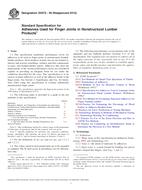
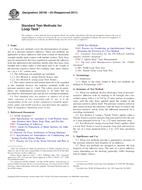 ASTM D6195-03(2011)..
ASTM D6195-03(2011).. ASTM D6252/D6252M-98..
ASTM D6252/D6252M-98..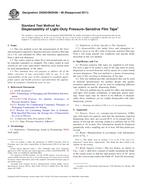 ASTM D6295/D6295M-98..
ASTM D6295/D6295M-98.. ASTM D6325-98(2011)..
ASTM D6325-98(2011)..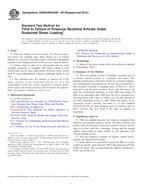 ASTM D6463/D6463M-06..
ASTM D6463/D6463M-06..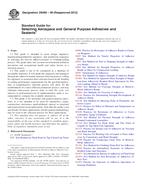 ASTM D6465-99(2012)..
ASTM D6465-99(2012)..
 Cookies
Cookies
